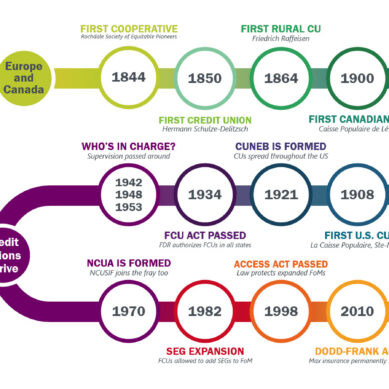The NCUA recently sent a letter to credit unions regarding updates to its interest rate risk (IRR) framework (22-CU-09). With the recent increase in interest rates, the possibility of a drop in a credit union’s net economic value (NEV) has also increased. The NEV for a credit union measures interest rate risk exposure as it relates to capital. It is also used to calculate a credit union’s risk classification level within the risk framework as low, moderate, or high.
Recognizing and alleviating risk
This rating by NCUA examiners is very important to credit unions because they can be issued a Document of Resolution (DOR) by either NCUA or state examiners if it is determined they have a high level of risk and have not adequately updated their approach to managing their interest rate, liquidity, and related risks for current market conditions. When this is the case, the credit union is responsible for responding to the DOR with an explanation and a plan of action to resolve the issue. Examiners are also required to follow up with credit union officials on outstanding DOR items after the timeframe for completion has passed. When the examiner performs a follow-up examination, they will confirm if the credit union is in compliance with the corrective action plan. Keep in mind, DORs can be issued for other reasons as well.
Interest rate risk is one item that could increase the probability of a credit union receiving a DOR. When secondary interest rates are high, credit unions may be more likely to place loans in their portfolio. Though many credit unions keep mortgage loans in their portfolio all year long, they must remember to be strategic about it to keep proper balance and minimize risk.
How can a mortgage CUSO help alleviate that risk? A CUSO can help credit unions shift the interest rate risk to the secondary market upon selling the mortgage, while retaining servicing rights in order to continue to provide top-notch service to their members. In return, the ongoing concern of having too high of a concentration of assets in long-term mortgages on their portfolio will be alleviated. The secondary market helps credit unions regain the liquidity necessary to fund their members’ loan needs.
Setting your credit union up for success
There are several small items that can have a large impact on a credit union’s mortgage lending department and help to alleviate risk. Below are the top three recommendations that have shown to help set up credit unions for success in the area of mortgage loans:
- Have a dedicated Mortgage Loan Officer (MLO) on staff at your credit union.
- Be prepared for disaster recovery and unforeseen circumstances with a plan of action.
- Consider partnering with a mortgage CUSO to help you alleviate risk by strategically placing mortgage loans on the secondary market, while retaining the servicing rights.
At Neighborhood Mortgage Solutions, we are constantly researching solutions to provide to credit unions as their mortgage CUSO partner. As such, we recently launched the NMS Retail Lending Division in January 2022 with internal mortgage loan officers. The NMS Retail Lending Division was built to assist credit unions that do not currently have the resources, staffing or experience to offer mortgage options to their members. During these unprecedented times, it is very beneficial to have an experienced partner ready to assist in the event of staffing difficulties or disaster recovery.

























































